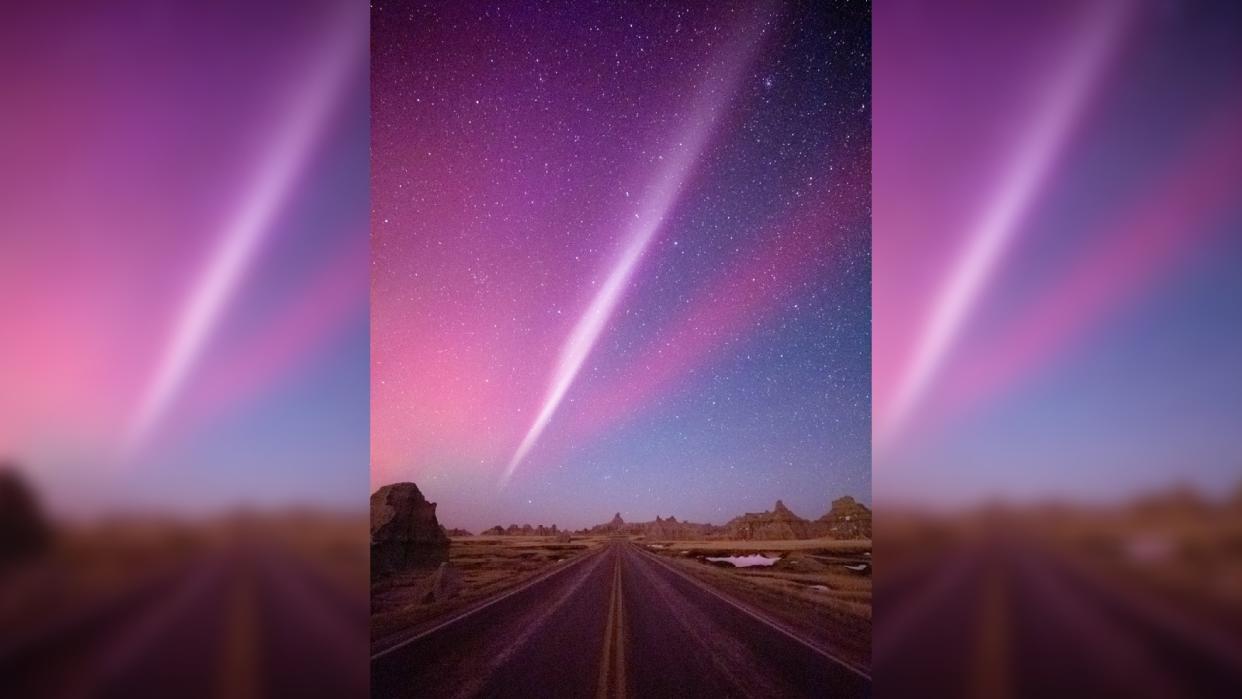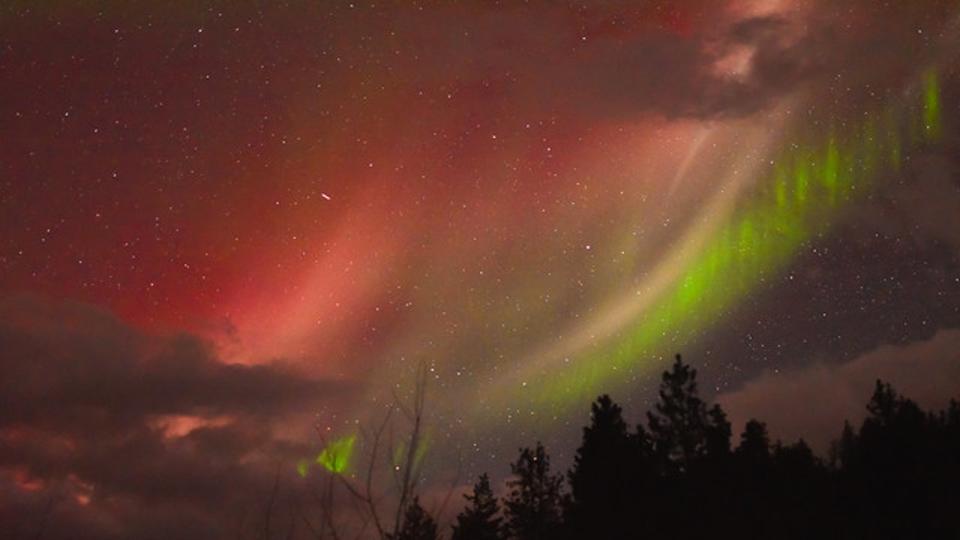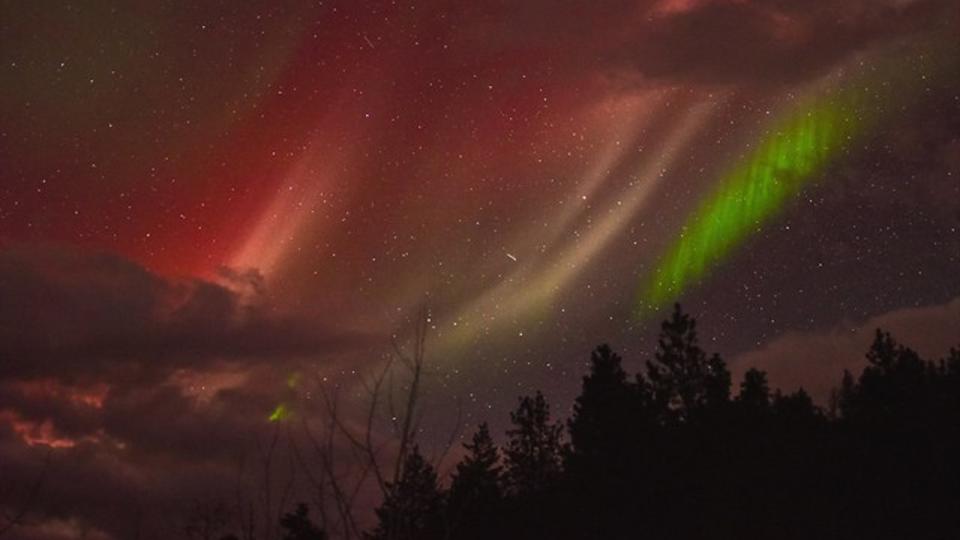Mysterious aurora-like phenomenon 'STEVE' appears during strongest solar storm for more than half a decade


A bizarre, aurora-like phenomenon known as STEVE made several appearances across the United States and parts of the United Kingdom last week, after a powerful solar storm slammed into Earth without warning.
STEVE, also known as a "strong thermal emission velocity enhancement," is a rare phenomenon that was officially discovered in 2016. During STEVE, a long, thick ribbon of light — usually white, purple or green in color — appears to hang in the sky for up to an hour. Although it looks very similar to auroras, or northern lights, and often appears at the same time, STEVE is not an aurora.
On March 23, a surprise coronal mass ejection (CME) — a gargantuan, fast-moving blob of plasma and magnetic field released from the sun — erupted from a massive hole in the sun that was wider than 20 Earths. Astronomers did not see the stealthy storm coming because it traveled much slower than normal CMEs and was therefore almost impossible to track. The resulting geomagnetic storm on Earth was the most powerful for six years and triggered spectacular auroras across the globe.
Related: Blood-red aurora transforms into 'STEVE' before stargazer's eyes



The sneaky solar storm also triggered unusually widespread sightings of STEVE. The phenomenon was photographed in South Dakota, Washington state, Idaho, Montana (twice) and in Scotland in the U.K., and it may have been visible in other places as well, according to Spacewaether.com.
During auroras, highly energetic particles from solar storms and solar wind break through the planet's magnetic field, or magnetosphere, and excite molecules of gas in the upper atmosphere. This creates swirling lights that ebb and flow over time. But STEVE is not triggered by high-energy particles and can occur much further away from Earth's poles than auroras tend to appear — although scientists are still unsure why.

Instead, STEVE is caused by a river of hot plasma, or ionized gas, that breaks through Earth's magnetosphere and into the ionosphere thanks to magnetic disturbances during solar storms. This plasma travels at around 13,300 mph (21,400 km/h), which creates friction with the surrounding air and excites molecules to glow in the same way as an aurora. But the constant flow of plasma causes an unmoving visual phenomenon for an observer compared with the dancing lights of auroras.
RELATED STORIES
—'Unreal' auroras cover Earth in stunning photo taken by NASA astronaut
—Solar storm smashes hole in Earth's magnetosphere, triggering extremely rare pink auroras
—Ultra-rare 'rainbow clouds' light up the Arctic Circle like auroras in stunning new photos
STEVE can also be accompanied by streaking green lights, or "picket fences," that flash in the sky for around 30 seconds before disappearing. Experts believe these picket fences form in a similar way to auroras, but the streaking lights are not fully understood.
This is not the first time STEVE has made an appearance above North America. In August 2022, STEVE was spectacularly photographed after it emerged in the skies above southern Canada after another surprise solar storm hit Earth.

